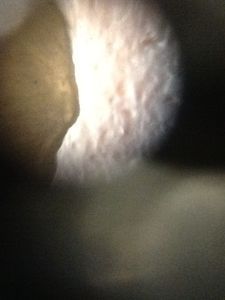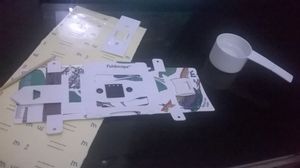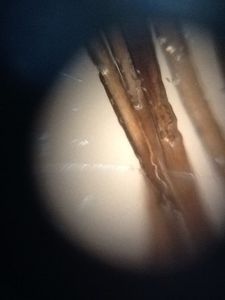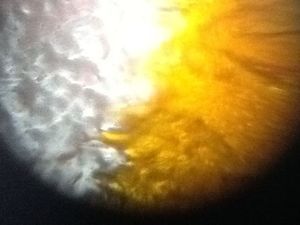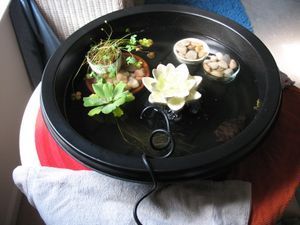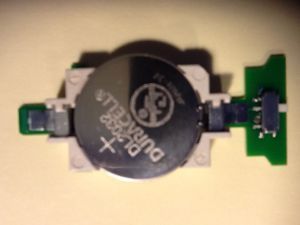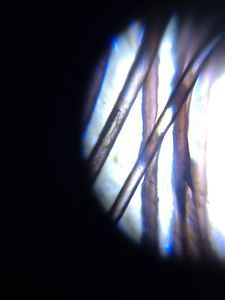Study in Light: Low/High Magnification, Onion Skin and Natural Light.
 Feb 21, 2015 • 12:30 PM UTC
Feb 21, 2015 • 12:30 PM UTC Unknown Location
Unknown Location 140x Magnification
140x Magnification Microorganisms
Microorganisms
Katharine Honan
I am a middle school science teacher, teaching grades 6-8, using inquiry to inspire interest in and knowledge of the world around us. Concord, NC, USA
11posts
3comments
1locations
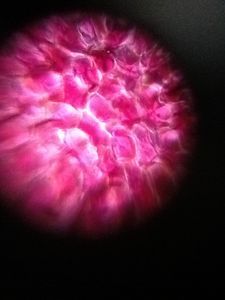
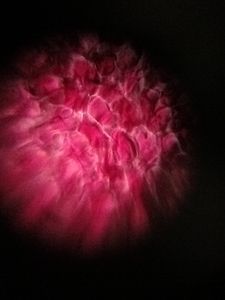
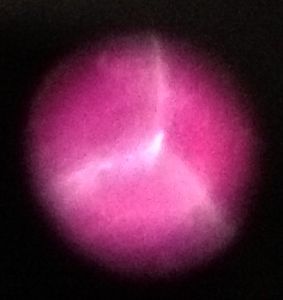
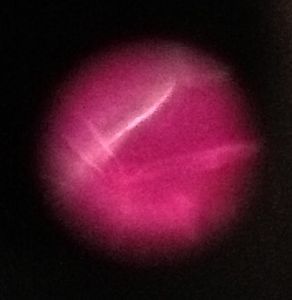
The topography of the onion skin delights me and the colors are so beautiful, including a purple impossible to capture. Under lower light, the cell walls look taller than the cytoplasm, and look to be ragged, not as I expected. The shapes of the cells are interesting, and some are curved, perhaps bulging from being crushed…not the offset brick pattern I expected. I’m looking at my onions in a whole new way now!
Fine-tuning my methods now that we’ve fried our LED board:
I tried using a bright overcast sky as the light source, and blocking using my hand or turning away from the window to regulate light. I also discovered a great stabilizer for keeping the lens “on the spot” when I find something interesting – my hands are not terribly steady, or able to fine adjust with tiny enough movements. Little bits of masking tape (the white kind) have enough stretch to allow me to move around the area of the specimen, but remain fast enough to keep things in place for viewing and taking pictures, leaving my hands free to bend and lift the scope to focus, and to push the shutter button. I used a wee piece of tape on every thing that might move when I don’t want it to, including the slide. This really helped when switching from low to high mag…I just pulled out the one lens and replaced it with the other, and the spot I wanted was still in view! I used a school iPad for photos, as I don’t need a smart phone 😉
Fine-tuning my methods now that we’ve fried our LED board:
I tried using a bright overcast sky as the light source, and blocking using my hand or turning away from the window to regulate light. I also discovered a great stabilizer for keeping the lens “on the spot” when I find something interesting – my hands are not terribly steady, or able to fine adjust with tiny enough movements. Little bits of masking tape (the white kind) have enough stretch to allow me to move around the area of the specimen, but remain fast enough to keep things in place for viewing and taking pictures, leaving my hands free to bend and lift the scope to focus, and to push the shutter button. I used a wee piece of tape on every thing that might move when I don’t want it to, including the slide. This really helped when switching from low to high mag…I just pulled out the one lens and replaced it with the other, and the spot I wanted was still in view! I used a school iPad for photos, as I don’t need a smart phone 😉
Sign in to commentNobody has commented yet... Share your thoughts with the author and start the discussion!
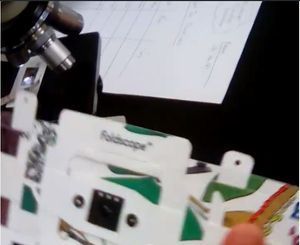
 0 Applause
0 Applause 0 Comments
0 Comments